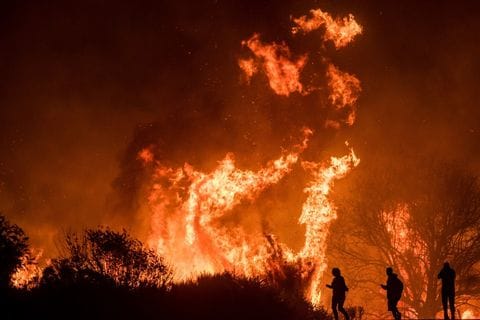California Fire on Schools

Photo courtesy washingtonpost.com
The Camp fire in Northern California and the Woosley fire in Southern California have been ravaging cities and towns throughout the state. Areas not engulfed in flames have experienced extremely low air quality. According to a Berkeley report, there was a point in which Oakland, California had the worst quality of air in the world.
A devastating result of the fire is the inability for many students to attend school. Over a million public school students from San Francisco to San Diego were sent home. Edsource says, “Smoke from the fires has forced the closings of 180 K-12 districts serving approximately 1.1 million students.” Some schools are estimated to be closed for a long period of time and some will never reopen after being burned to the ground.
Another issue is student homelessness. The Huffington Post states that since 2014, student homelessness has risen 20%. That number is sure to increase as the number of homes lost from the fire will be met with the already high costs of living and housing prices. Many will not be able to afford to live in certain counties and would be forced to move out. In Sonoma County, an area greatly impacted by the Camp fire, the school administration fears for the spread of the student population. Kids have been displaced from their homes and may be living with other family or friends, which may not be close to the school. Certain schools will expect a lot more students while the population of others’ may be lacking due to the movement of families.
Luckily, the recuperation of communities has already begun. The United Press International says that 2 million dollars in federal aid have been given to wildfire-affected schools. Fox News reports that a sorority at Sonoma State University has raised about $1,000 toward a $5,000 goal to help rebuild the gymnasium and other parts of the campus affected by the fire.
There is not much a school can do to prepare for a devastating event like these, but the effort to rebuild their communities and schools are huge steps towards re-establishing routines into these kids’ lives.

Grade: 12
Years on Staff: 4
Why are you writing for The Flintridge Press? I've written for the press since freshmen year. It's a great outlet...






